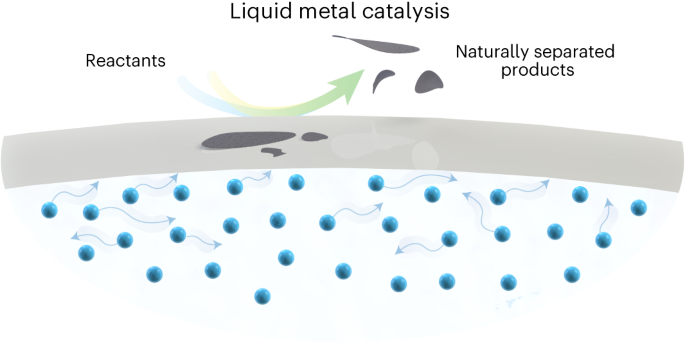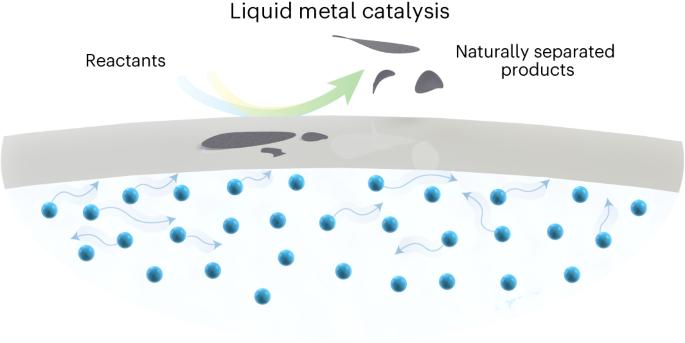Current state and future prospects of liquid metal catalysis
IF 42.8
1区 化学
Q1 CHEMISTRY, PHYSICAL
引用次数: 0
Abstract
The need for advances in the sustainable production of fuels and chemicals has accelerated the push for innovation in catalytic systems that enable progress in chemical science and other technologies. Liquid metals have recently gained traction as an emerging class of catalysts that offer exciting sets of features, strengths and challenges. Here we provide insights into how current advances in liquid metal chemistry can be leveraged for an already burgeoning field of catalysis. By reflecting on recent demonstrations of efficient liquid metal-driven catalytic systems and leveraging the recent advancements in the chemistry of liquid metals, we glance at applications that stand to benefit from this class of catalysts, particularly in supporting oxidation, reduction and chemical looping reactions. Moreover, we explain how the utilization of next-generation liquid metal catalysts is being shaped by current reactor designs and highlight how a series of analogies with homogeneous catalysts can inform the effective deployment of liquid metal catalysts. Thanks to a unique set of properties, liquid metal catalysts provide advantages compared to traditional solid systems, yet their potential in heterogeneous catalysis has not been fully explored. This Perspective identifies some of the key advances in the field of liquid metal catalysis, discussing areas where progress is expected through further fundamental understanding as well as reactor engineering.


液态金属催化的现状与前景
燃料和化学品的可持续生产需要进步,这加速了催化系统的创新,从而推动了化学科学和其他技术的进步。最近,液态金属作为一类新兴催化剂备受瞩目,其特点、优势和挑战令人振奋。在此,我们将深入探讨如何利用液态金属化学的最新进展,推动催化领域的蓬勃发展。通过对最近展示的高效液态金属驱动催化系统的反思,并利用液态金属化学的最新进展,我们概述了可从该类催化剂中获益的应用,尤其是在支持氧化、还原和化学循环反应方面。此外,我们还解释了目前的反应器设计如何影响下一代液态金属催化剂的使用,并强调了与均相催化剂的一系列类比如何为液态金属催化剂的有效部署提供依据。
本文章由计算机程序翻译,如有差异,请以英文原文为准。
求助全文
约1分钟内获得全文
求助全文
来源期刊

Nature Catalysis
Chemical Engineering-Bioengineering
CiteScore
52.10
自引率
1.10%
发文量
140
期刊介绍:
Nature Catalysis serves as a platform for researchers across chemistry and related fields, focusing on homogeneous catalysis, heterogeneous catalysis, and biocatalysts, encompassing both fundamental and applied studies. With a particular emphasis on advancing sustainable industries and processes, the journal provides comprehensive coverage of catalysis research, appealing to scientists, engineers, and researchers in academia and industry.
Maintaining the high standards of the Nature brand, Nature Catalysis boasts a dedicated team of professional editors, rigorous peer-review processes, and swift publication times, ensuring editorial independence and quality. The journal publishes work spanning heterogeneous catalysis, homogeneous catalysis, and biocatalysis, covering areas such as catalytic synthesis, mechanisms, characterization, computational studies, nanoparticle catalysis, electrocatalysis, photocatalysis, environmental catalysis, asymmetric catalysis, and various forms of organocatalysis.
 求助内容:
求助内容: 应助结果提醒方式:
应助结果提醒方式:


